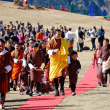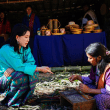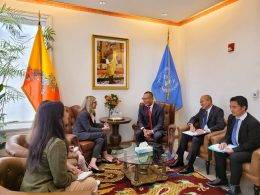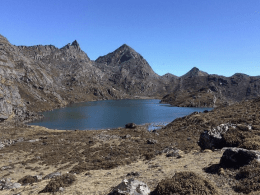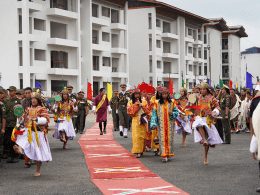Nestled between India and China, Bhutan is often described as the last Shangri-La—a kingdom where snow-capped mountains meet serene valleys, monasteries cling to cliffs, and life is measured not by wealth but by Gross National Happiness (GNH). But beyond its postcard-perfect landscapes and vibrant festivals, Bhutan is quietly pioneering a model of tourism that balances visitor experiences with cultural preservation and environmental stewardship.
Unlike most countries chasing mass tourism, Bhutan has consciously chosen to tread lightly. The “high-value, low-impact” tourism policy ensures that travelers do not overwhelm the country’s fragile ecosystems or dilute its rich cultural fabric. All visitors, except for citizens of India, Bangladesh, and the Maldives, are required to pay a daily Sustainable Development Fee (SDF). This fee, often seen as a barrier to budget tourism, is central to Bhutan’s sustainability strategy: it funds infrastructure, community development, and conservation initiatives across the kingdom.

How Tourism Supports Culture and Nature — Sustainable Travel in Bhutan
Eco-tourism is woven into every aspect of Bhutanese travel. Trekkers traversing the iconic Snowman Trek or the Tiger’s Nest hike encounter not just breathtaking landscapes but also eco-lodges that adhere to strict environmental standards. Many lodges operate on solar power, employ local staff, and source food from nearby farms, creating a closed-loop economy that benefits communities while reducing carbon footprints. Even guided treks are regulated to avoid environmental degradation; permits and guides ensure that sensitive trails, alpine meadows, and highland forests remain pristine.
Responsible travel in Bhutan extends beyond environmental measures. Visitors are encouraged to respect local customs, dress modestly when visiting dzongs and monasteries, and observe rituals without disrupting them. Tour operators often include cultural briefings before excursions, highlighting etiquette, traditions, and the significance of religious sites. This approach fosters meaningful interactions between tourists and communities, ensuring that travel experiences are immersive rather than extractive.

Bhutan’s cultural preservation is another remarkable facet of its sustainable tourism model. Dzongs, monasteries, and temples are carefully maintained, often with support from the SDF and UNESCO partnerships. Travelers are not just spectators; they contribute to the upkeep of these heritage sites. Festivals, or tshechus, remain community-centered celebrations rather than commodified spectacles, allowing visitors to witness centuries-old mask dances, chants, and rituals while reinforcing local identity. By integrating tourism into cultural preservation, Bhutan creates a symbiotic relationship where visitors support traditions rather than eroding them.
Nature conservation is equally paramount. The country has set aside over 50 percent of its land as protected areas, ranging from alpine meadows to subtropical forests. National parks and wildlife sanctuaries, such as Jigme Dorji, Royal Manas, and Phobjikha Valley, serve as habitats for endangered species including snow leopards, red pandas, and black-necked cranes. Sustainable tourism here means controlled access: guided tours, limited group sizes, and designated observation points minimize disturbance to wildlife while allowing travelers to experience Bhutan’s remarkable biodiversity.

What makes Bhutan’s approach particularly effective is its holistic vision. Tourism revenue does not flow into faceless corporations but directly benefits communities, funds conservation, and supports public services. Visitors leave with more than souvenirs—they depart with an understanding of Bhutan’s philosophy, where prosperity is intertwined with harmony: harmony between humans and nature, tradition and modernity, and tourism and preservation.

Yet, Bhutan is not immune to challenges. Growing global interest has led to calls for revisiting the daily tariff and accommodating more travelers without compromising the kingdom’s ecological and cultural integrity. The delicate balance between accessibility and preservation remains a central question for policymakers and travel operators alike. Nevertheless, Bhutan’s model offers a blueprint for sustainable tourism that many countries could emulate: intentional, conscious, and rooted in long-term well-being rather than short-term profit.
For travelers seeking more than the ordinary, Bhutan offers a journey that nurtures both the soul and the environment. Every trek, every festival, and every encounter with local communities is a reminder that tourism does not have to come at the cost of culture or nature. In the Land of the Thunder Dragon, sustainability is not a buzzword—it is the very essence of the experience.

